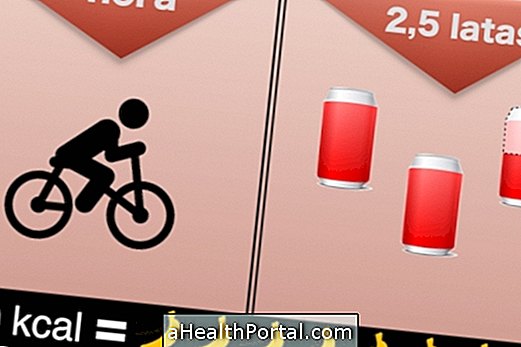Weight-loss surgery, known as bariatric surgery, such as gastric banding or bypass, works by modifying the stomach and altering the normal digestion and absorption of nutrients, helping the person to lose weight and gain quality of life. .
Weight-loss surgeries are indicated for people with a BMI greater than 35 or 40, as they are considered obese or morbidly obese, and surgeries usually help to lose between 10% and 40% of the weight.
Techniques for Bariatric Surgery
Generally, weight-loss surgery is done under general anesthesia, and can be performed by laparotomy, making an extensive cut to open the patient's belly, leaving a scar about 15 to 25 cm above the umbilical scar or through laparoscopy, being made a few holes in the abdomen, where they pass the instruments and a video camera to perform the surgery, leaving the patient a very small scar and approximately 1 cm.


Before surgery, the patient should be evaluated by the physician, have blood tests and perform a high endoscopy to assess if they have conditions to perform bariatric surgery. In addition, in normal cases, the surgery can take between 1 and 3 hours and the length of hospital stay may vary from 3 days to a week.
Types of Surgery to Lose Weight
The most common stomach-aids that help you lose weight include gastric banding, gastric bypass, gastrectomy, and the intragastric balloon.


1. Gastric band for weight loss
Gastric banding is a weight-loss surgery that involves placing a band around the upper stomach and dividing the stomach into two parts, causing the person to ingest small amounts of food because his or her stomach is smaller.
In this surgery there is no cut in the stomach, this is only tight as if it were a balloon, decreasing in size. Learn more at: Gastric Band for Weight Loss.
2. Gastric bypass for weight loss
In gastric bypass a cut is made in the stomach that divides it into two parts, one smaller and one larger. The smallest part of the stomach is the one that is working and the largest part, although it has no function, stays in the body.
In addition, a direct connection is made between the small stomach and a part of the intestine which, having a smaller path, leads to the absorption of small amounts of nutrients and calories. Learn more at: Gastric bypass to lose weight.


3. Intragastric Slimming Balloon
In the intragastric balloon technique a balloon is placed inside the stomach which is of silicone and is filled with saline solution. When the individual ingests food, they stay on top of the balloon, giving very quickly the feeling of satiety.
This surgery is done through an endoscopy, not requiring general anesthesia and leads to a loss of up to 13% of body weight. However, the balloon should be removed 6 months after its placement. See more in: Intragastric balloon for weight loss.
4. Vertical gastrectomy for weight loss
The gastrectomy consists of the removal of the left part of the stomach and ghrelin, which is a hormone responsible for the sensation of hunger and, therefore, leads to a decrease in appetite and a decrease in food intake.
In this surgery the normal absorption of nutrients occurs, because the intestine does not change and, up to 40% of the initial weight can be lost. Learn more at: Vertical Gastrectomy for Weight Loss.
Useful links:
- How to Relieve the Symptoms of Dumping Syndrome
Bariatric surgery























